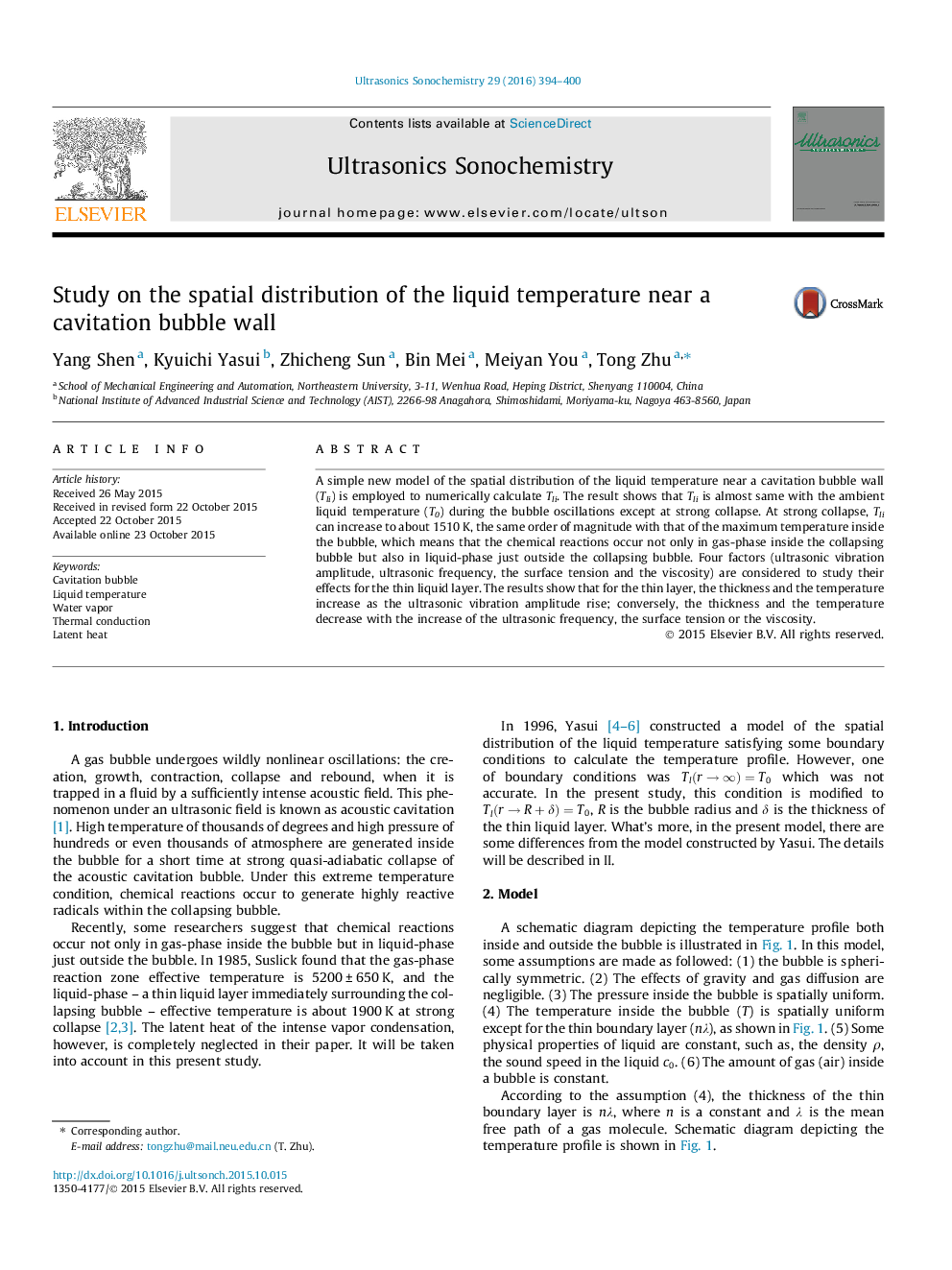| Article ID | Journal | Published Year | Pages | File Type |
|---|---|---|---|---|
| 1265886 | Ultrasonics Sonochemistry | 2016 | 7 Pages |
•A simple new model is employed to calculate Tli.•The chemical reactions occur in liquid-phase just outside the bubble.•The result is consistent with the result studied by Suslick.•Four factors are considered to study their effects for the thin liquid layer.
A simple new model of the spatial distribution of the liquid temperature near a cavitation bubble wall (Tli) is employed to numerically calculate Tli. The result shows that Tli is almost same with the ambient liquid temperature (T0) during the bubble oscillations except at strong collapse. At strong collapse, Tli can increase to about 1510 K, the same order of magnitude with that of the maximum temperature inside the bubble, which means that the chemical reactions occur not only in gas-phase inside the collapsing bubble but also in liquid-phase just outside the collapsing bubble. Four factors (ultrasonic vibration amplitude, ultrasonic frequency, the surface tension and the viscosity) are considered to study their effects for the thin liquid layer. The results show that for the thin layer, the thickness and the temperature increase as the ultrasonic vibration amplitude rise; conversely, the thickness and the temperature decrease with the increase of the ultrasonic frequency, the surface tension or the viscosity.
